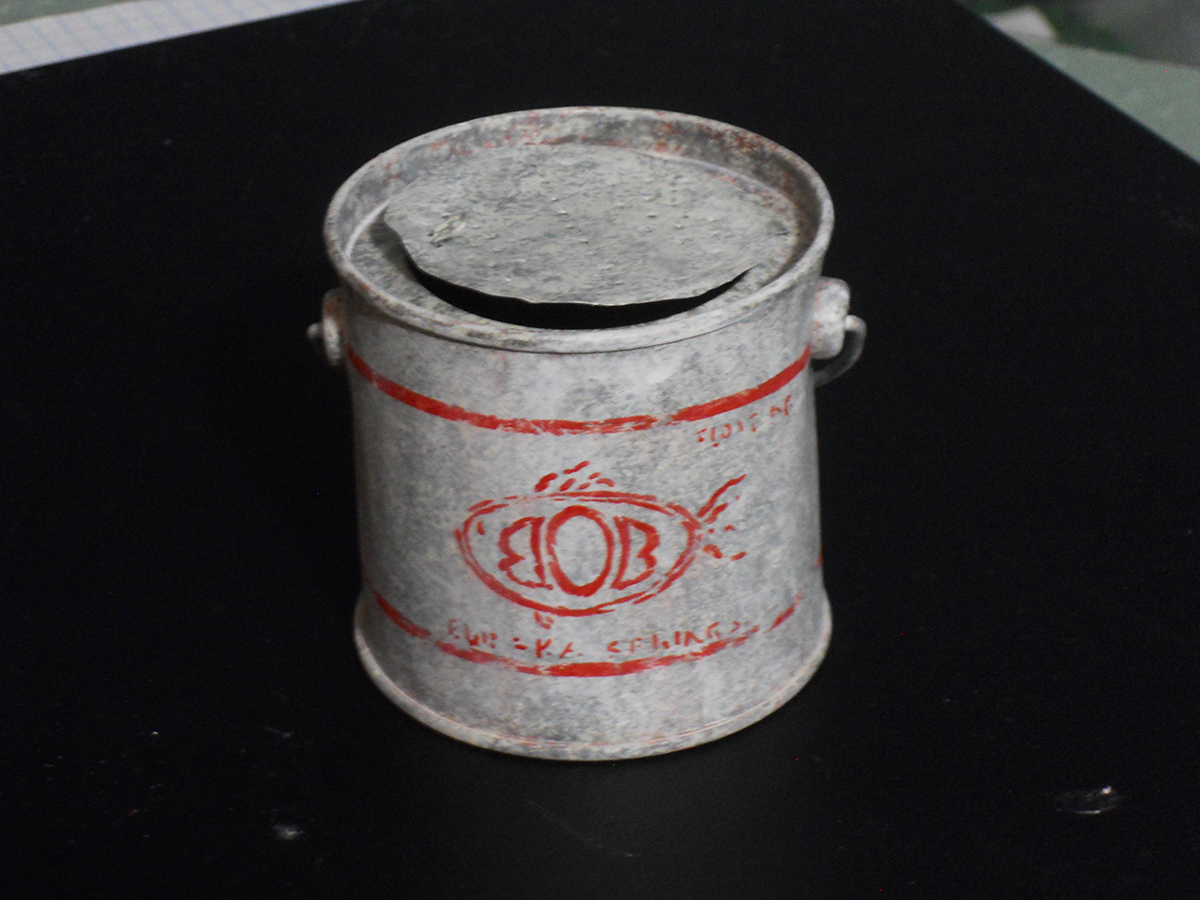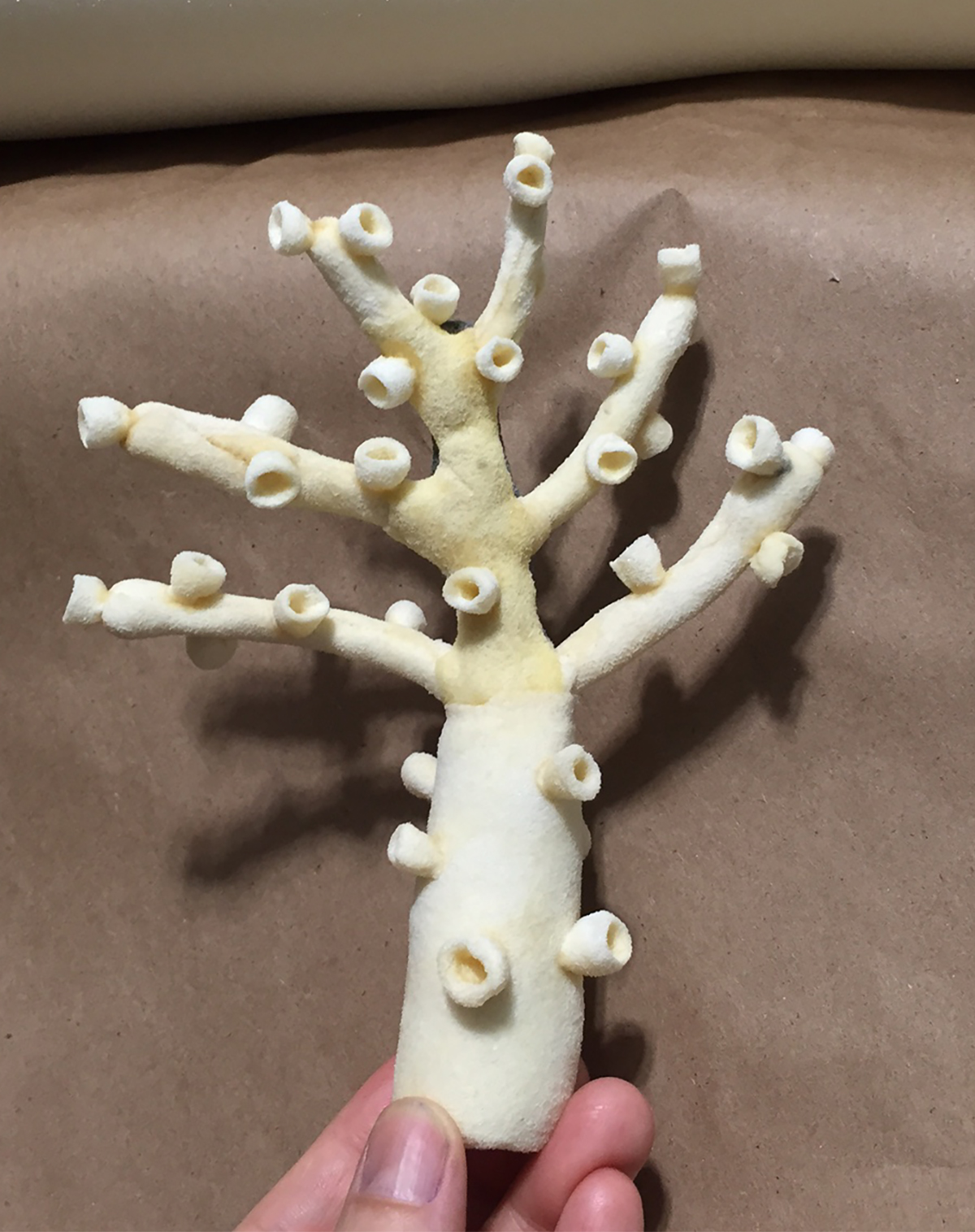

Sketches of the S.S. Bean

Building the boat.
The boat is sculpted out of foam, epoxy resin and wood. If you look close enough, you can see a miniature version of the boat resting on the prow.

Checking scales.
We are constantly checking the scale of the boat and props against the scale of the puppet figures. The puppet figures haven't arrived yet, so a print stands in for the characters.

Boat details.
Kathleen is adding details to the boat, such as rivets and the prow.

Rigidity
A coat of epoxy resin is applied to the interior and exterior of the S. S. Bean.

Wheelhouse
We never know how much of the prop will be seen in the video, so we always make more than necessary.

Scale
This gives a good idea of scale.

Bait bucket.
Kathleen titled the bait bucket after Lori's father, Bob. She is especially happy with the galvanized finish she created.

Bucket and cup in action.

Angler fish skeleton.
The angler fish starts out as a wire framework.

Strengthening
A mix of wire and epoxy helps strengthen the model as it will be manipulated a lot during filming.

Foam body
The wire and epoxy skeleton is filled out with foam and latex rubber.

Filling out the body.

Additional support.
Foam and thread is added to the body for more support.

Gnarly Teeth

Fresh corn is in season.

Finishing touches
Body color and eyeballs are the last to be applied to the angler fish.

Sketches for Guppy.
Before sculpting the main character and additional school of fish, Guppy begins as a series of sketches.

Clay model

Model for the school of fish characters.

Fitting fins and eyes before casting.

First casting.
A plaster mold is made from the clay fish. Silicone is cast over a wire armature.

Mold bits and pieces.
Body, fins and mouths are ready to cast.

Finished puppet.

Lobster character in progress.

Final lobster puppet.

Rock fish.
This little guy is camouflaged amongst the rocks of the trench walls.

Toothy fish.
Kathleen makes sure the teeth fit properly with the bottom jaw.

Final colors.

Seagull.
The seagull begins as a combination of wire, thread and epoxy.

Wingspan

Sculpting the head.

Sculpting the head.

Folded wings.
The wings need to be able to stretch out and fold under.

Cloth
Cotton is applied to the wings.

Feathers
Individual feathers are glued in place.

Ready for flight.

Trench walls begin.

Rocks
The trench wall is created out of individually sculpted rocks and glued to a supporting board.

Initial color is laid down.

Adding textural details and color.

Checking scale.

Anemone and coral.

Coral puppet.
Constructed from wire, thread, foam and latex.

Pink is the color.

Ocean
The ocean needs to be transparent, yet viable for several months of shooting. Fifteen pounds of goo and clear vinyl fit the bill.

Tweaking the ocean.
Mike Healey helps seal the ocean in place.

Viper fish.
The viper fish begins as a clay character, ready for a plaster mold.

Head hardware.
After the main body is cast in silicone, an armature is created for the head.

Close up of the viper head.

Making sure the mouth has plenty of movement.

He's nicer than he looks.

Starfish.
Wire armature inside starfish mold.

Starfish.

Starfish is ready to de-mold.
























































